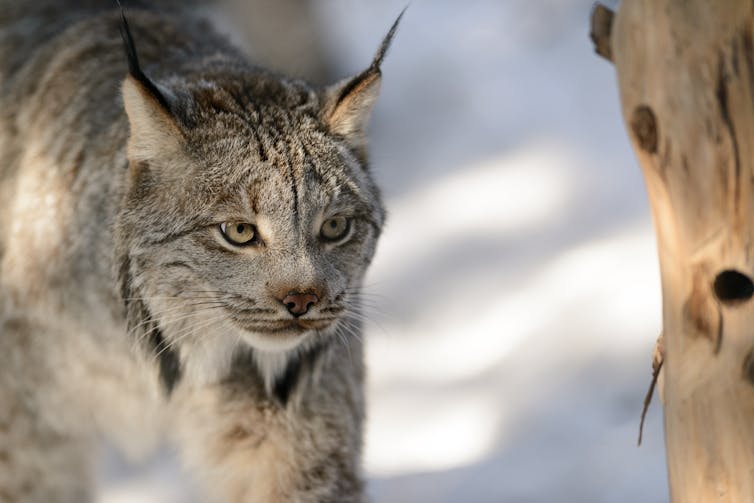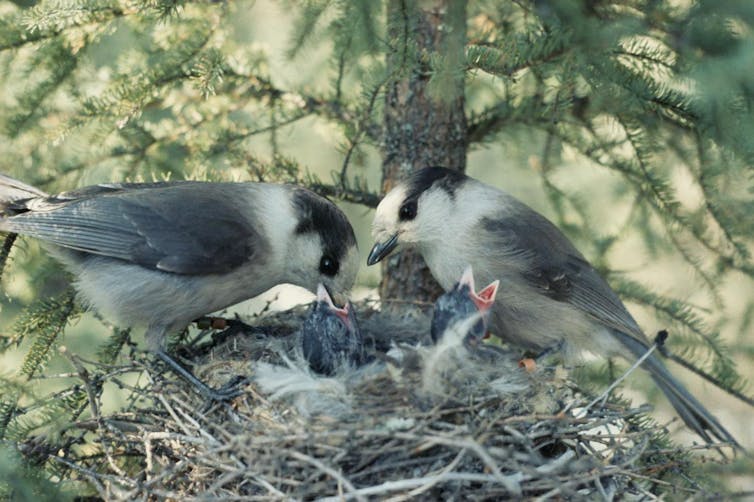Why we're sequencing the genomes of Canada's iconic species

Published: June 28, 2018
Last year, to commemorate CanadaÔÇÖs 150th birthday ÔÇô and to lay a foundation for Canadian research excellence for the next 150 years ÔÇô a group of scientists in our country embarked upon the Canada 150 Sequencing Initiative (CanSeq150).
Motivated by our nationÔÇÖs curiosity about the animal that most shaped our history, in time for CanadaÔÇÖs sesquicentennial. WeÔÇÖve also begun sequencing 34 other species, including the Canada jay (Perisoreus canadensis) and the Canada lynx (Lynx canadensis).
Our goal is to sequence the genomes of 150 organisms important to Canada ÔÇô and Canadians.
We are accepting proposals from researchers who present the best cases for the historical or immediate importance to Canada of each proposed organism. As new species are chosen, CanadaÔÇÖs Genomics Enterprise (CGEn) will announce .

Some of these genomes will be sequenced in a way that allows us to develop and test new technologies or methods to analyze the genetic sequence. We also hope that by better understanding the genomes of other species ÔÇô and our own ÔÇô we can better understand ourselves and our place in natural history.
Scientists learn and teach : ÔÇ£Nothing in biology makes sense except in the light of evolution.ÔÇØ
In the 21st century, with the vision that genomic sequences will enable better biological and medical studies, we might consider updating DobzhanskyÔÇÖs insight to include genome sequence as well as evolution.
The CanSeq150 approach builds on past experience and provides inspiration for new submissions. For example, when the severe acute respiratory syndrome (SARS)-associated coronavirus threatened the health of Canadians in 2003, .
No bird brain
WeÔÇÖre now working on generating a genomic sequence of Perisoreus Canadensis ÔÇô the Canada jay ÔÇô that can be used as a reference for other studies. (Known as the gray jay for 60 years, the .)
The Canada jay inhabits all 13 provinces and territories, and figures strongly in First Nations folklore, where it is called the Wisakedjak, or whiskey jack. There is strong support for its designation as CanadaÔÇÖs national bird.

A fascinating attribute of the Canada jay is its superior intelligence. It has developed a highly complex food-stockpiling strategy across widely scattered sites that keeps the bird alive through the winter breeding season. Each Canada jay can retrieve thousands of saliva-coated food caches each season by memory and pattern recognition ÔÇô all hard-wired by its brain structure and encoded by its genome.
Nature and nurture
Long before Canada was a country, early accounting ledgers of the Hudson Bay Company show the Canada lynx and the snowshoe hare were in an obligate relationship.
The two animals share identical geographic range, covering the Canadian boreal forest. Deduced from historical fur harvest records, .
The genomes of the lynx and the hare can enlighten researchers on how the changing environment induces hormones and contributes to the cyclical declines in reproductive fitness in the hare population.
The genetic changes encoding the environmental sensors that underlie seasonal coat colour changes in the snowshoe hare, among other physiological and environmental relationships, will be revealed.
LifeÔÇÖs code
The genome provides cells with directions like a blueprint, or orchestral score, for all aspects of development throughout the life of the organism.
Humans inherit half of their DNA from each parent, as they did from their parents, and so on, right back to the origin of Homo sapiens. The genomic information embedded in this DNA ties together the millions of species of Charles DarwinÔÇÖs tree of life.
We have ample examples demonstrating how decoding human genomes can reveal the underpinnings of diseases and disorders, such as and , and . Medical or pharmaceutical treatments , such as the proteins a cell expresses on its surface.
By definition, genome sequencing provides far better coverage of a genomeÔÇÖs genetic markers than earlier technologies. We will be sequencing whales and trout, bear and sheep, maple trees and fungus, in order to discover genomic ÔÇô DNA markers covering all the cellÔÇÖs chromosomes ÔÇô that are important for selection and adaptation, and can be used in breeding and conservation.
Gift to science
I teach my own students that as some applications of genomic science are becoming rather effortless, we are now only limited by our creativity.
To encourage such creativity, we believe that the first crack at studying a given new genome sequence .
For CanSeq150, we will sequence the genomes of 150 organisms brought forward by Canadian researchers.
We believe that those same scientists can best harness the genome sequence information for our country ÔÇô and for the world.
These experiences will influence decisions for future projects, including those related to human disease. The typical cost of a genome project will be $3,000, and while this cost will be borne by CGEn and its partners, the studies will be led by the researchers who submit the genomes for sequencing.
Results from CanSeq150 will be available to researchers worldwide through public databases, such as the .
With our ÔÇ£updatedÔÇØ (genome-based) view of DobzhanksyÔÇÖs evolutionary biology concept, we aspire to promote scientific discovery altruistically. Understanding the intersections among the CanSeq150 species ÔÇô and others ÔÇô will surely help us become wiser custodians of our heritage.
, is the director of the McLaughlin Centre for Molecular Medicine at the ║¼º▀▓¦┤½├¢.
This article was originally published on . Read the .
![]()



